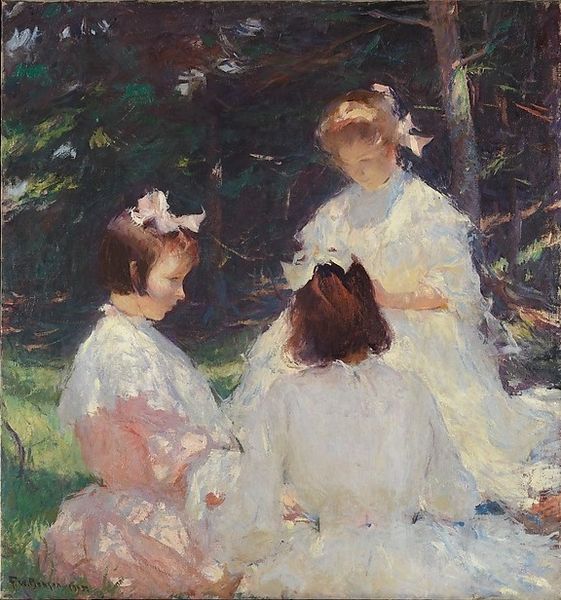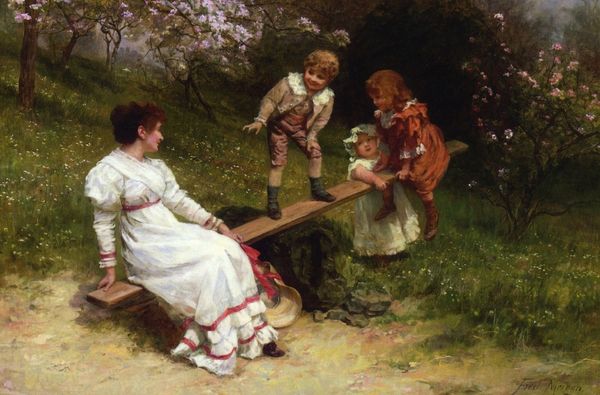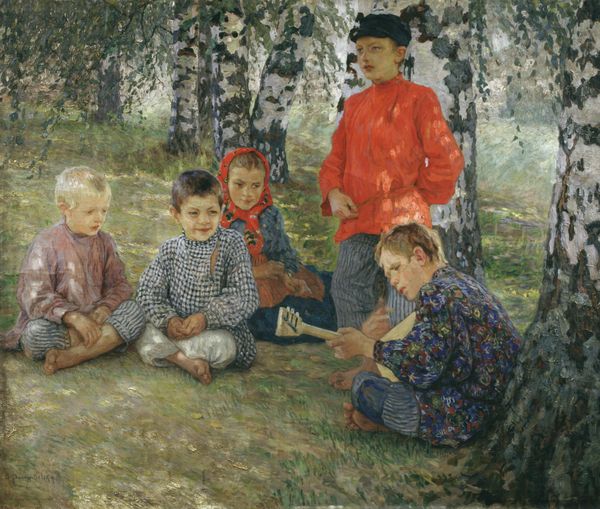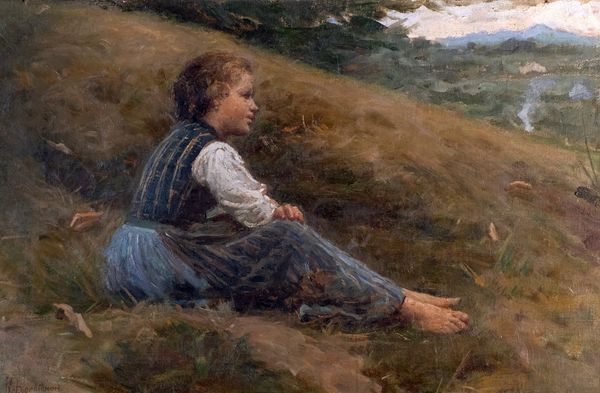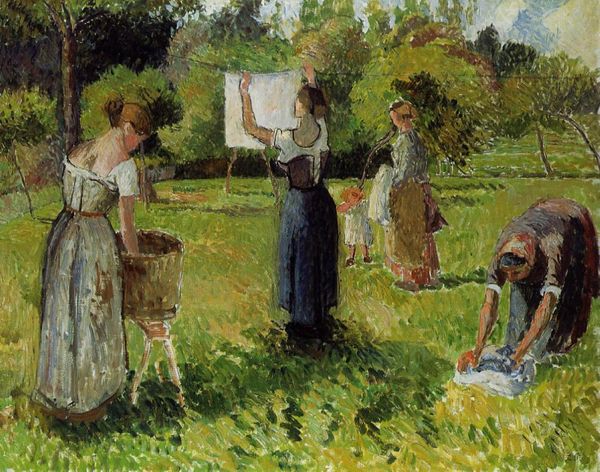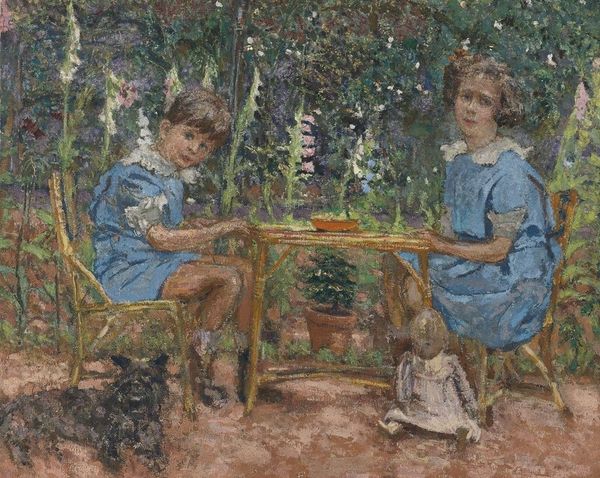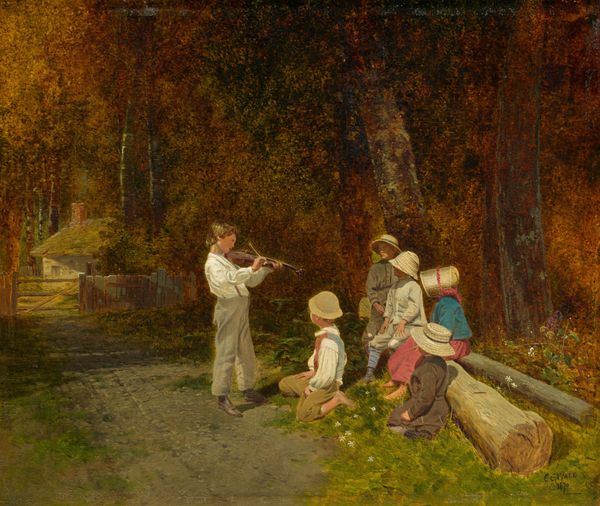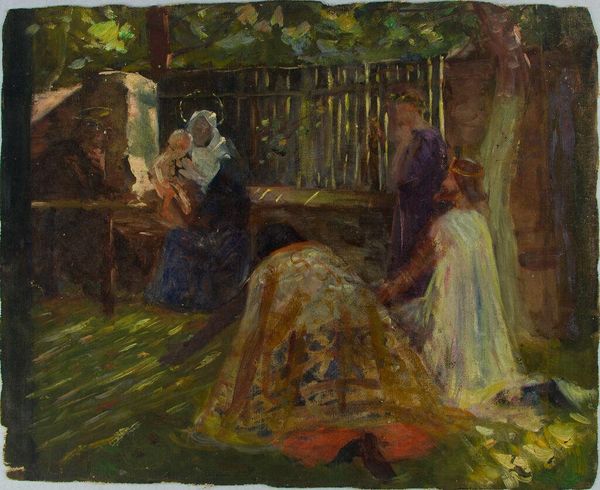
Copyright: Public domain
Editor: Frank Benson’s “Four Children at North Haven,” painted in 1904 with oil on canvas, depicts four children in a sun-dappled landscape. There’s a sense of tranquility, but also a kind of staged formality that feels a bit unsettling to me. How do you interpret this work? Curator: What strikes me is the performance of childhood within the constructs of Edwardian society. These children, likely from a privileged background given the location and their clothing, are positioned within a ‘natural’ setting, yet their poses and attire feel decidedly artificial. Consider the power dynamics at play – Benson, likely the father, orchestrating this scene. How might the act of painting itself, the male gaze, shape our understanding of childhood innocence and domesticity during this era? Editor: So, you’re saying it’s not just a pleasant scene, but a statement about class and social expectations? The sailboat feels symbolic too, somehow. Curator: Absolutely. The sailboat, a toy associated with leisure, reinforces the children’s socio-economic position. Furthermore, think about the changing roles of women during the early 20th century. The emphasis on domesticity and the nurturing of children was a strategic response to the burgeoning suffrage movement and the growing number of women entering the workforce. This painting then, in a way, participates in a larger cultural conversation about gender roles and societal norms. Editor: That's fascinating. I hadn't considered the painting in that light. It seemed so innocent at first glance. Curator: Indeed. It reminds us that even seemingly benign images can be powerful conveyors of ideology. What seemed like a straightforward family portrait actually contains complex layers of meaning related to gender, class, and the social anxieties of the time. Editor: This makes me want to dig more into how artists portrayed children during this period. I appreciate how you linked the artwork to broader cultural issues. Thanks!
Comments
No comments
Be the first to comment and join the conversation on the ultimate creative platform.
